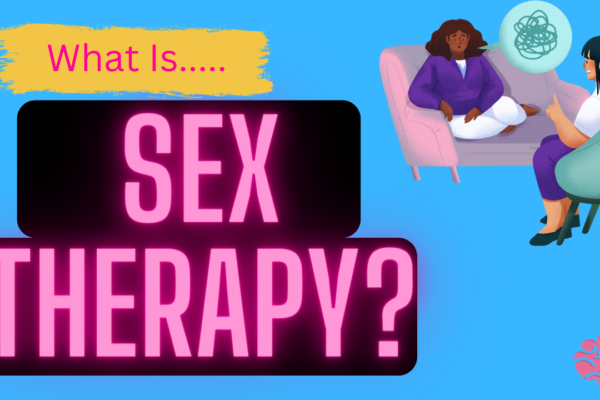Table of Contents
How To Cope With Depression in 12 Proven Steps: Step 2
How To Identify Your Unhealthy Thought Patterns
In this post, I will cover:
- How to identify your unhealthy thought patterns
- The “chaining” skill for increasing healthy thoughts and lifting your mood
- The ABC’s of CBT
- Categorizing your thoughts.
As mentioned in the previous post, How To Cope With Depression in 12 Proven Step-1, we are not brought up in society where we are socialized to think about our thinking. Learning to examine our thoughts and their relevance is something that we must condition ourselves to do. Now lets move on to learning how to identify your unhealthy thought patterns.
In this post I will cover some of the most common unhealthy thinking pattens and how to examine, challenge and replace them with more relevant and accurate thoughts true to their context, versus those that are pulled from a reference of past lived experience, such as a traumatic event.
In the previous post, I touched on the importance of tracking your mood. This is as important for linking associated thoughts as it is in identifying your triggers, and I would even argue more important.
In its most basic form, an unhealthy thought is pessimistic, limiting, judging or shaming (or all the above). The fascinating thing however, is that we all tend to have repetitious patterns in our negative thoughts. This is a good thing, however, because it means that if we are able to start labeling them, then it becomes easier to catch them.
The “Chaining” Skill For Increasing Healthy Thoughts And Lifting Your Mood
“Chaining” is a term that that will learn become common knowledge if you continue to read the following posts. It is a skill that allows you to see the progression of your thoughts and correlating mood in an upward or downward trend.
In Cognitive Behavioral Therapy, a traditional mood scale ranges from 1 to 9, with 9 being the happiest and 1 being the most depressed.
If we imagine that 5 is neutral, and then we assign a triggering event to it, then we can start to see the relationship between our thoughts and our mood more readily.
Now, triggering events are only triggering because of the connotations or meanings that we ascribe to them. That is not to say that they are inconsequential, but rather, that it is important that we attend to the way in which we respond to events, starting with our interpretations of them, and thus our self-talk.
For example, if we say that the event taking place is a job loss, we would label it as a five on a scale of 1-9. Second, we would imagine what a typical thought would be for us (we are all different), and decide if that thought would bring our mood up or down (helpful or unhelpful).
Example:
- 9-“I will call a temp agency if I cannot find a job on my own within two weeks.”
- 8-“I will update my resume.”
- 7-“I learned a lot from my last job that I can apply to my next job.”
- 6-“It is unfortunate, but I need to start looking for another job.”
- 5-JOB LOSS (neutral event before interpretations applied)
- 4-“No one values me, what is wrong with me.”
- 3-“I cannot keep a job.”
- 2-“What is the point in looking for work, nothing ever works out for me.”
- 1-“I am useless, no ones values me without a job, no one wants to help me, so why bother asking for help at all.”
Understanding the progression of our thoughts is important because it emphasizes the process in catching our initial reactions to events early on. The chaining exercise and example above illustrates the relationship between the nature of our thoughts, our sense of competence and our corresponding level of motivation.
The ABC’s of CBT
The problem with our thoughts is that they are often non-factual, and we take them at face value. Remember, that a thought is often a statement, or a question.
In order to test our thoughts for validity, we need to screen them with three criteria. Accuracy, Balance, and Completeness. If we are careful to check our thoughts this way, then our interpretations and assessments of events and our reflections of our own actions, are going to be better rooted in reality, and thus more fair to others and to ourselves. This in turn yields a better acceptance of the circumstance and better confidence in how we choose to proceed.
So the ABC’s then, are about checking our thoughts. However, before we can check them, first we must learn to catch them, which brings us to the next skill; Labeling them.
Categorizing Your Thoughts
When we start to pay attention to our thought processes, we are already ahead of most other people in personal growth. That is because when we are being mindful of our intentions, we gain a greater perspective and understanding of the many co-factors involved in the circumstance that we find ourselves observing.
We are what we repeatedly do. Excellence, then, is not an act but a habit.
Aristotle
Just as healthy habits are formed out of consistency and discipline, poor habits are formed out of repetition and assents.
Common habits of unhealthy thinking are the things that we want to learn to label, so that we can catch them faster and then correct them, and the faster we catch them, the more we can mitigate the fallout of skewed assumptions derived from them.
As you learn to observe your thoughts, and label them, you will likely find that you gravitate toward distinct categories, and it is not uncommon for any one of us to have a particular pitfall we learn to guard against as we grow. But if you keep at it, you can learn to identify your unhealthy thought patterns faster and disrupt negative behavior patterns that follow.
Categories: the most common categories of harmful thoughts are as follows:
- Catastrophizing: This is a telltale sign of anxiety. You know you are catastrophizing when you are fast-forwarding 100 steps ahead to the worst possible outcomes as if they are the most likely, which prevents you from dealing with things as they come and maintaining perspective and proceeding mindfully, considering all your options.
- All or Nothing Thinking: This is often referred to as “black and white” thinking. There is no grey. Things and relationships and people are labeled as all good, or all bad. Statements of the self are very concrete; “I am unlovable”; “I can’t talk about my feelings.”
- Negative Fortune Telling: This is similar to pessimism, but differs in that it is tantamount to a handicapped sense of pleasure predicting. With this thought process, it becomes very difficult to sustain any sense of motivation because everything seems pointless. This is often times what accompanies anhedonia, a common symptom of depression wherein the person loses interest in activities they used to enjoy.
- Pessimism: This is like assuming that the deck is stacked against you all the time, or that the dice of life are loaded. Practically, things are usually at least 50/50 in terms of their outcome. This is like seeing life through a 25/75 lens.
- Labeling Oneself: Just like it sounds, we label ourselves with derogatory absolutes, like “stupid”, “ugly”, “bad”…
- Negative Filtering: This is the act of minimizing positive feedback, but exaggerating any feedback that could be perceived as negative or critical. This often looks like being overly modest. This is especially dangerous because it creates social boundaries that others will respect by discontinuing to provide you with praise, which feeds back into depressive self-talk…”see, no one ever says anything nice to me.”
- Exaggerating: This is that old saying of “making mountains out of mole hills.” We either become paralyzed from addressing our problems because they seem bigger than life, or turn minor grievances into social warfare.
- Overgeneralization: This is the act of projecting an infinite number of negative outcomes from a single event, often reflecting a lack of belief in one’s capabilities. It is making the assumption that all situations will occur in like manner, and therefore discourage one from attempting something a second time if their initial experience was poor.
- “Should”ing: This is the act of feeling obligated to do something, or self-imposed guilt for not acting according to one’s own expectations, leaving them feeling resentful, oppositional, or disappointed.
- Blaming Oneself: Just like it sounds. The belief pattern that all unfortunate outcomes stem from your own actions. You are always at fault, regardless of the circumstances.
- Mind Reading: Assuming you know what others are thinking in relation to you and that it is a negative appraisal. This also referred to as “reflected appraisals” in psychology.
Practice
In order to learn how to identify your unhealthy thought patterns, you will need to practice the skills discussed in this post regularly, until it become a habit.
Exercise: At the end of every day, rate your mood for the day on a scale of 1-9, with 9 being the happiest. Then, list any specific events that occurred that day that may have contributed to your mood. Then, try to recall what category of thoughts you noticed the most in conjunction with your low moods. At the end of a week or two, look for a trend of thought patterns that you can identify. That will be your target for catching your thoughts. You will then be armed with a way to label your thoughts, and then challenge them for accuracy, balance and completeness.
Looking Ahead
Up next: In my next post on fundamental coping skills for depression, I will be covering:
- Fact finding/reality testing
- Thought replacement
- The CBT “Catch It, Check It, Change It” mantra.
Question: Did you practice the skills we discussed? How was it tracking your mood and/or your thoughts? I would like to know what your experience has been like. Please leave a comment bellow to let me know how it is going and feel free to ask any questions you may have.
It is my mission to equip you with valuable and effective coping skills and clinical interventions, to improve your mood, be more productive and improve your quality of life, so you can do more, and worry less.
ASK: If you have a question you’d like me to answer here on the blog (even if you think it’s a silly one!), please use the form on the CONTACT ME page, or the comment section below. I would be happy to take a poke at it and provide a long form answer when appropriate.
SHARE: Also, be sure to share it with a friend, as there is still a lot of work to be done in raising mental health awareness.
SUBSCRIBE to get your FREE MOOD TRACKING TOOL and quick Mental Health Hacks in addition to this newsletter. Sign-up with the form below.
Recommended Reading
Heads up: This article/page does contain affiliate links to products sold on Amazon, which I recommend in the context of this discussion, because they have proved to be helpful to me and/or my clients. As an Amazon Associate I earn from qualifying purchases by way of commission at no additional cost to you.

NEED CRISIS HELP? If you need immediate crisis help with your depression, you can call the National Suicide Prevention Lifeline at 1-800-273-8255 or text “START” to 741-741
OUTSIDE THE UNITED STATES: See International Suicide Hotlines
WHERE TO FIND MENTAL HEALTH HELP:
-NAMI Referral Helpline: 1-800-950-6264
-California’s Statewide Mental Health Helpline: 1-855-845-7415
The fundamental coping skills for depression being covered over the next several posts are derived from an evidenced-based practice of psychotherapy known as Cognitive Behavioral Therapy (CBT), in which I am certified to practice by the Academy of Cognitive Therapy. For those who are not familiar with theoretical models or therapeutic interventions, an evidenced-based practice (EBP), is a term that describes “a best practice”; one that has been tested and researched and shown to be an effective treatment for a specific condition with results that are sustainable (the scientific method). Aaron T. Beck is the father of Cognitive Behavioral Therapy, and the skills discussed in this series of posts are derived from his work (and his cohorts) which are referenced at the end of this article.
References:
Group Cognitive Behavioral Therapy for Depression:-Jeanne Miranda, Ph.D; Stephanie Woo, Ph.D.; Isabel Lagomasino, M.D., M.S.H.S.; Kimberly A. Hepner, Ph.D.; Shelley Wiseman, B.A.; and Ricardo Muñoz, Ph.D. Revised August 2006.
admin
Latest posts by admin (see all)
- Thriving with Autism and ADHD: Expert Strategies for Managing Burnout - April 22, 2024
- Serial Killer Spotlight: Dr. Caparelli’s True Crime Analysis - April 14, 2024
- Donna’s Law: Stop Gun Suicides - March 22, 2024









